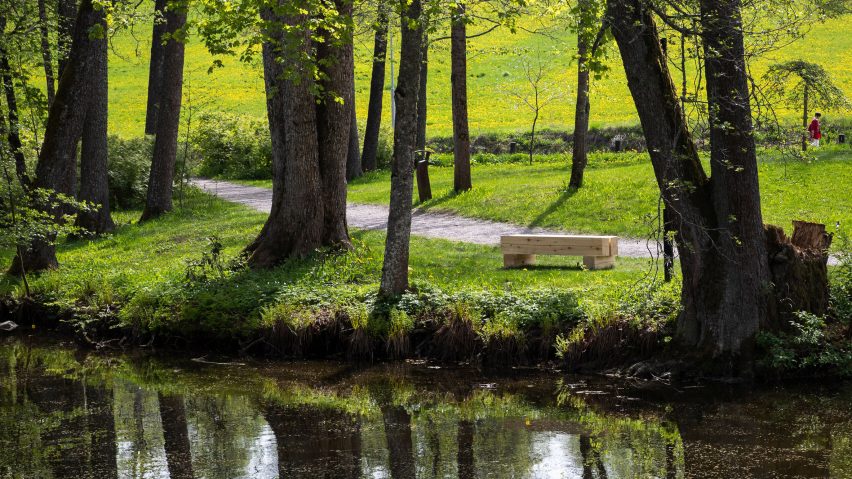
Jasper Morrison curates collection of designer benches for Fiskars Village Biennale
Jasper Morrison has enlisted 18 designers including Martino Gamper, Michael Marriott and Cecilie Manz to create benches for Fiskars Village in Finland, for its inaugural art and design biennale.
The London-based designer was invited by the organisers of the Fiskars Village Biennale to curate the installation, which involved placing public benches along the banks of the Fiskars River.
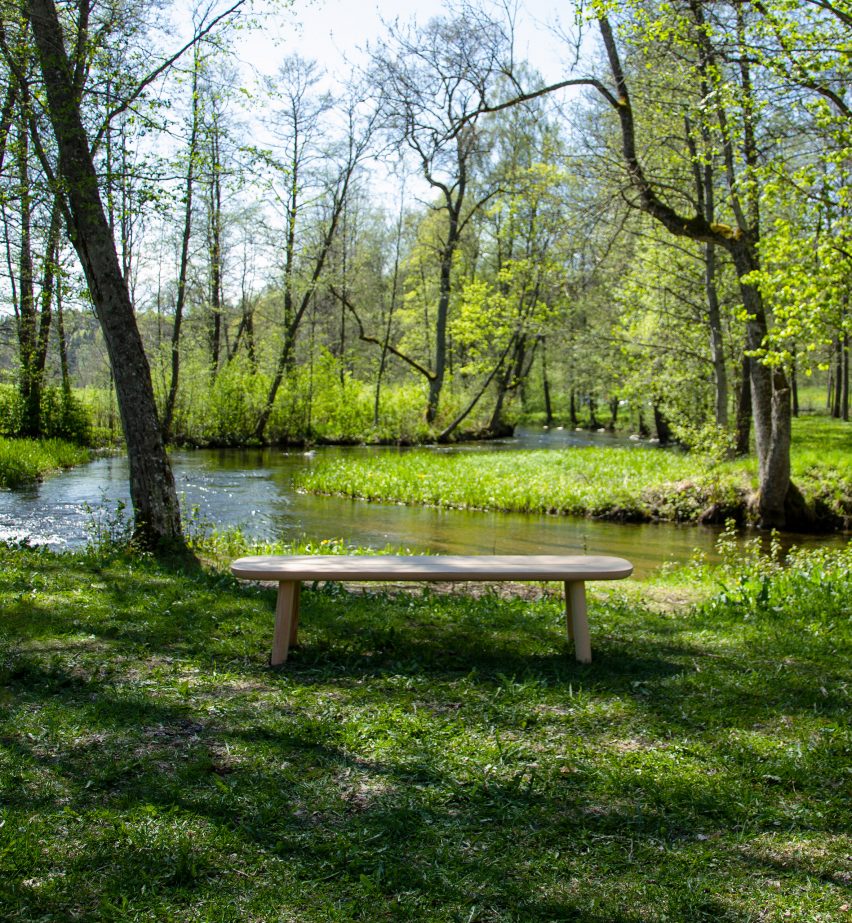
The Social Seating benches were installed ahead of the event's inaugural edition, which opened on 19 May 2019. The festival emphasises the principles of diversity and sustainable development, which are encapsulated in a programme that brings together art and design.
Visitors have an opportunity to engage with work by almost 100 artists and designers who are selected by three curators, Jasper Morrison, Anniina Koivu and Jenni Nurmenniemi.
In a text in the festival's catalogue, Morrison suggested that the biennale format offers an opportunity to explore the less commercial aspects of design, adding that biennales can be viewed as "an antidote to the endless design fairs and design weeks which have proliferated in recent years".
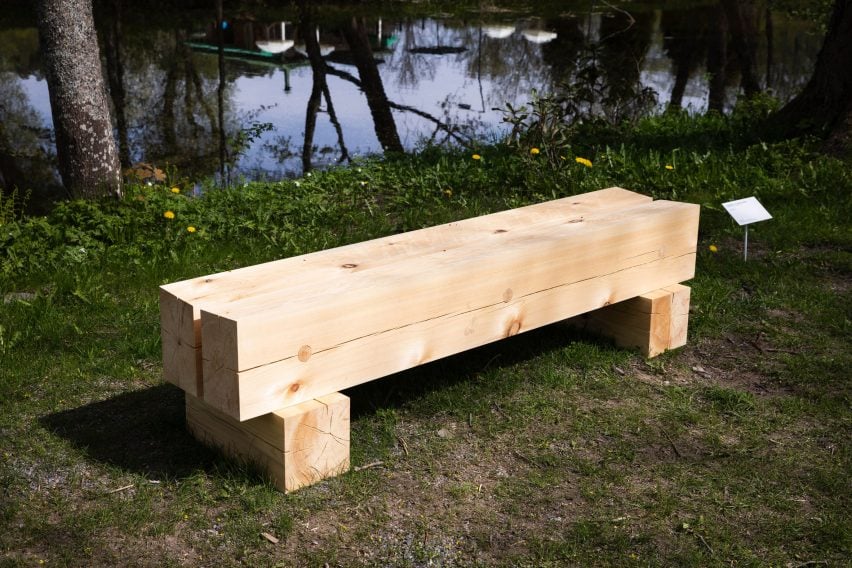
The village where the festival takes place was developed around an ironworks established in 1649, which gave rise to the company that bears its name.
The village's historic buildings are heritage listed and Fiskars is now a significant centre for handicrafts that is home to around 600 inhabitants.
Morrison claimed his decision to commission a series of benches was based on the arrangement of the village's ex-industrial buildings along the banks of the river. As an object intended to be shared, the bench also reflects the biennale's theme "coexistence".
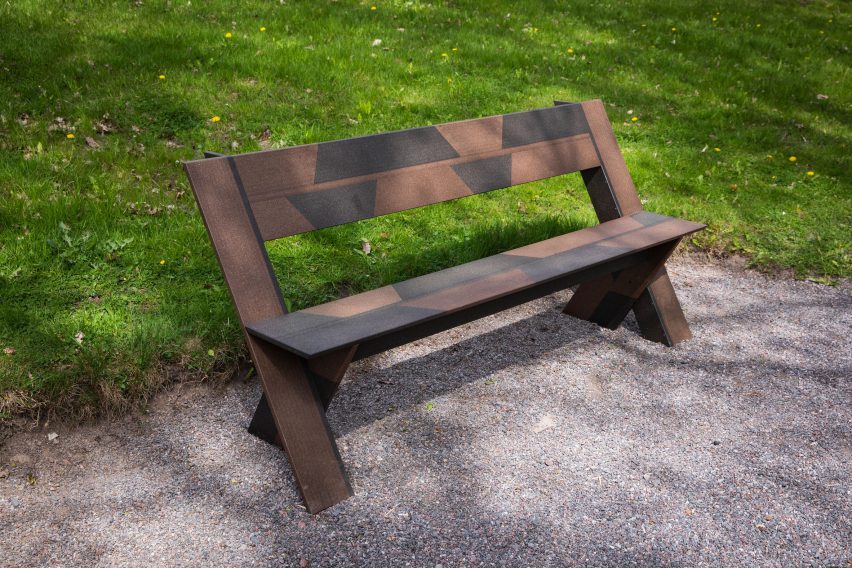
Morrison selected designers of all ages whose work he admires to create the seating solutions, which are placed along the river banks between the venues that house the biennale's main exhibits.
"The public bench is rare in the spectrum of furniture types," said Morrison. "It belongs to no one and is available to all; it stands as a symbol of community and enhances the quality of everyday public life."
"In terms of a design challenge, the bench offers infinite structural, material, expressive, and sculptural possibilities," he added. "We all know a good bench when we see one, and this makes them an ideal subject for an event of this kind."
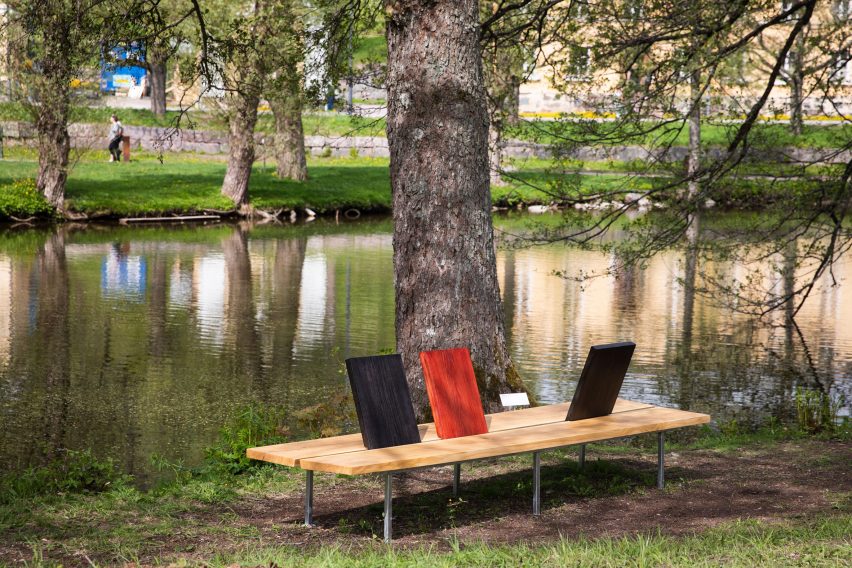
Morrison provided the 18 designers with a simple brief to "design a bench for a Finnish village". He claimed this request offered greater clarity and freedom than the more complex and commercial briefs most designers are used to.
The designers responded to the brief with a wide range of proposals that represent distinctly individual interpretations of this simple and familiar object.
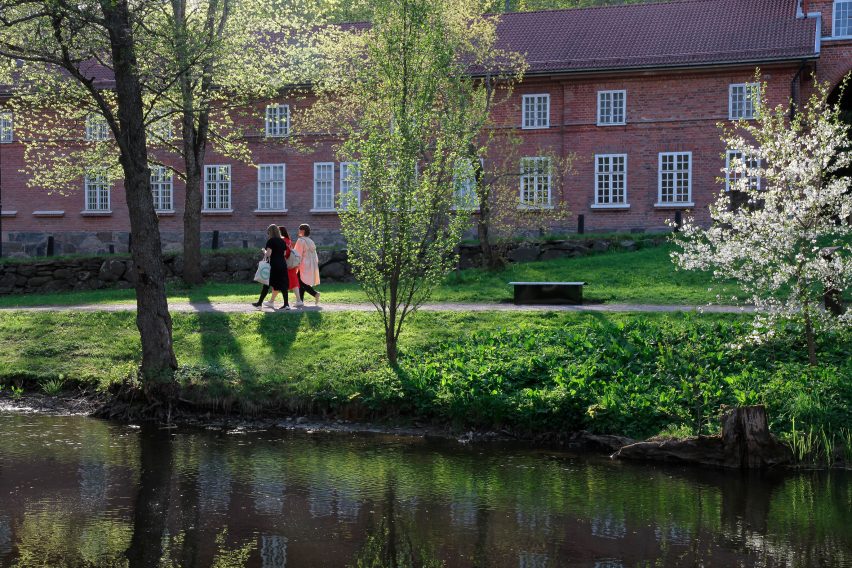
Finnish designer Harri Koskinen created a simple bench made from four sections of raw pine wood, with the two main pieces angled inward slightly to create a comfortable and ergonomic seat.
Portuguese designer Hugo Passos's bench in oak responds to its location next a sturdy tree. The bench's backrest abuts the tree trunk, which acts as an additional support for users sitting on an extended section of the seat.
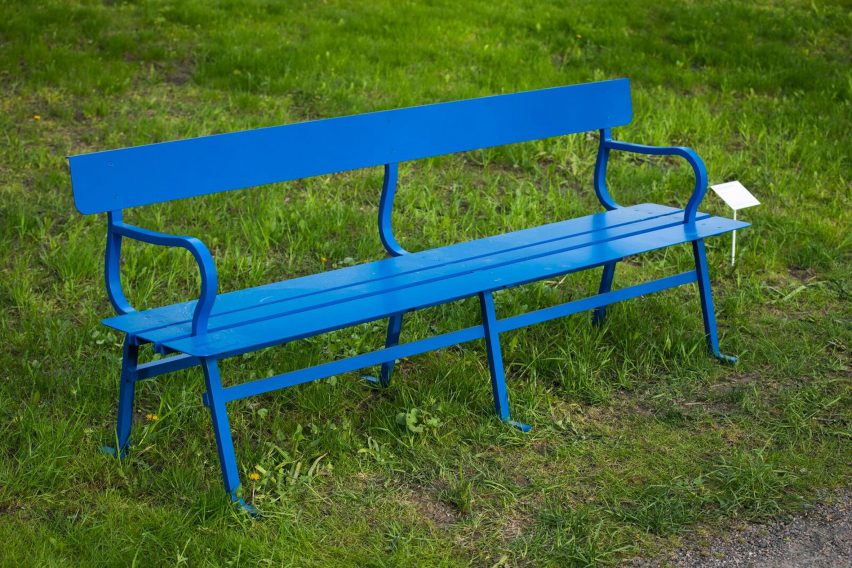
Julien Renault from France developed a minimal bench in enamelled steel with a slender, curved seat, while Martino Gamper used sheets of a recycled plastic composite to produce a design featuring a dynamic angular pattern.
Finnish designer Simo Heikkilä combined native oak with galvanised steel to create a seating platform with angled boards slotted into a gap at the centre.
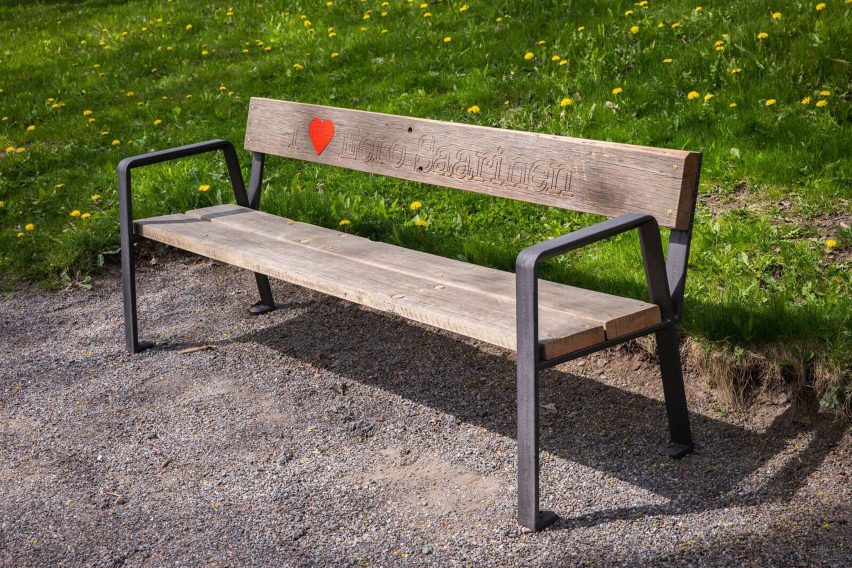
Other designers who created benches for the project include Aino Michelsen, Stafford Schmool, Jens Fager, Karin Widnäs, Keiji Takeuchi, Klaus Hackl, Maria Jeglinska, Michel Charlot, Sosuke Nakabo, Thélonious Goupil and Wataru Kumano.
The 2019 Fiskars Village Art & Design Biennale exhibitions are open to the public until 15 September. This includes a programme of events organised by local artists, designers and galleries presented alongside the main exhibits.
The humble park bench was also the focus of a previous project in a Stockholm suburb that saw international designers including Max Lamb, Scholten & Baijings and Philippe Malouin create "Superbenches" for a public park.
Photography is by Kerttu Penttilä unless stated.